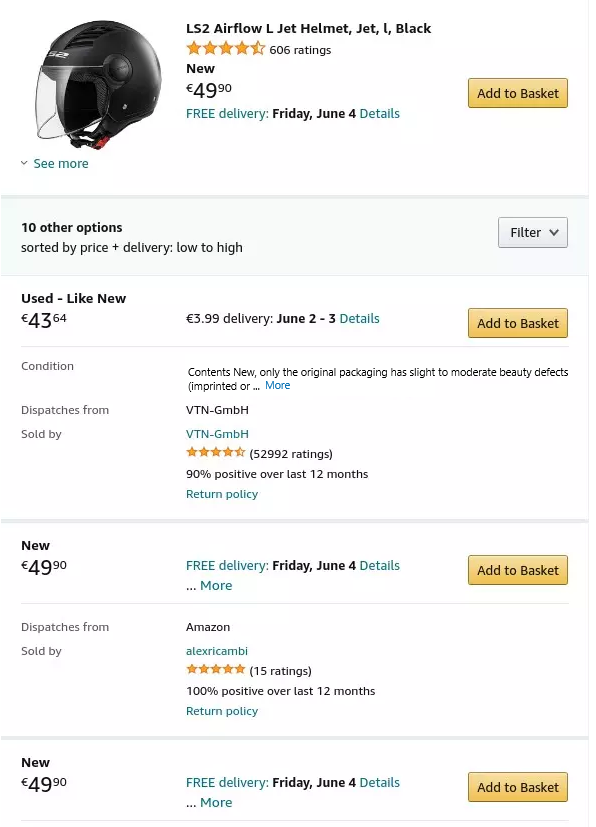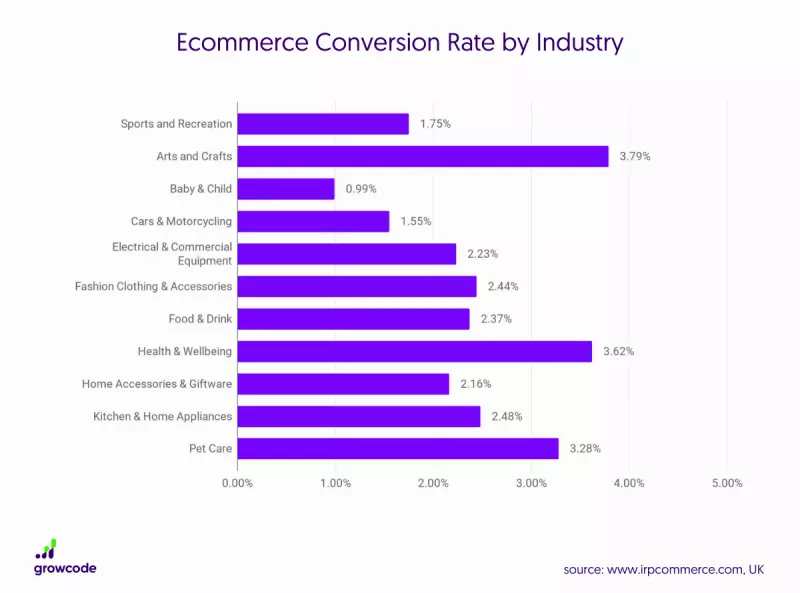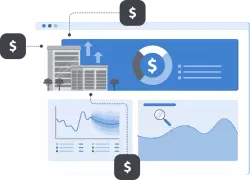What is a Conversion Rate?
What is the conversion rate good for and why do you need to measure it?
Here you can find definitions and details about Conversion Rate.
Conversion Rate Definition
What is important besides Conversion Rate?
What Conversion Rates are good?

What is your Conversion Rate?
Normally, you have several Conversion Rates. To understand them, let’s take a simple example. Imagine you own a sports store.
Every day, passers-by walk by your store. Not all passersby are your potential customers. Some may have just bought all the clothing and accessories they need elsewhere. Others don’t like the decoration in the shop window. And others are simply too young or too old and you have nothing suitable.

In the online world, you can view these as Traffic (such as Views of your Ads, your Home Page, and Landing Pages).
Some of the passers-by, however, are attracted by the display in your shop window. They stop and enter your store. The people come in and have an interest.
To translate that back to the online world, these are your visitors or your sessions.
However, not every person wants to buy something. Some are just browsing. Others are looking for something specific that they can’t find at your store. A part also buys something. These people become your customers.
Transferred to e-business, these visitors have now been converted into customers.
You can calculate the conversion rate using an example:
Calculate Conversion Rate – the formula for calculating the conversion rate
As you can already see from the example, the conversion rate affects your profit.
For this purpose, a definition of conversion rate can be derived. Let’s take a look at an example.
Conversion rate is the percentage of visitors who reach a primary goal on your website.
Conversion rate (c) = Goals achieved (g) / Website visitors (t)
For example: 3 sales / 100 visitors = 0.03 (i.e. 3% conversion rate)
This can be something like downloading a white paper, buying a product, or registering a user account.
Measure for conversion rate optimization (or: CRO) two variables:
Discrete and continuous variables.
Discrete variables such as the shopping cart value.
Continuous variables such as the number of visitors per month.
Conversion Rate and What Else Is There?
Which Key Performance Indicators (KPIs) should I measure?
In e-commerce, in particular, it is important to measure other KPIs in addition to the conversion rate. These include, for example, the average shopping cart value, returns, and profit.
Break these values also like to Product groups and Months down.
It’s best to do the same with the conversion rate. If you calculate this for product groups, you can see whether there is room for improvement in some product groups that need improvement there is.

Take the monthly measurements to find out what is working well.
The monthly rhythm must of course fit into your way of working. If you have a lot of traffic and a Marketing Team, that is constantly optimizing, then you can also measure weekly and even daily.
For smaller companies with fewer employees, monthly measurements certainly make more sense.
Why is the average shopping cart value interesting?
The shopping cart value is important because it is related to the shipping of a package.
With any package, you have costs that need to be covered:
- Packaging costs
- Shipping costs
- Handling costs (the time required to finish packing a package).
Of course, it is possible to increase the conversion rate with an offer such as Free shipping from 5$ to increase the conversion rate. However, more orders via this way can lead to loss.
If 5$ order total does not cover the costs, then it usually does not make sense to increase the orders in this way.
Exceptions here could be special Marketing Campaigns with loss leaders.
How does the Conversion rate relate to the return rate?
There are some product groups that see higher returns than others.
A simple example of this is Pants and T-shirts.
T-Shirts can be selected with a simple indication of the size. In most cases, you know your own size and preferences for color, material, and other details. Moreover, T-shirts are often worn under a sweater or the like. Therefore a perfect fit is not so important.
With pants, however, it’s more complicated. Even if you know your own size exactly, it may still be that the pants simply do not fit or are not comfortable. Pants are subject to higher demands in terms of fit and comfort than T-shirts.
If you now use various measures to increase the conversion rate on pants, also pay attention to the return rate. When the return rate rises disproportionately faster than the conversion rate, you can earn less profit on the bottom line.
How does the Conversion Rate relate to profit?
You can increase the Conversion Rate partly through the price. The cheaper a product, the higher the probability of an order.
We can find an example of this at Amazon. Let’s take a standard product like a motorcycle helmet, which is offered by various retailers. The cheapest price (incl. shipping costs) is automatically selected for you.
If a person wants to buy a helmet explicitly from a dealer whose price is in the upper range, this person has to put in some effort. And the principle also makes sense. What reason is there to choose an expensive option for an identical product with standard service?

With Amazon, the difference here is extreme. There are products that are sold by several merchants. The expensive merchants have a Conversion Rate of 0%. The cheapest merchant has a Conversion Rate of 6%, for example.
So, you can easily increase your conversion rate on such product listings. Just offer the cheapest price.
Now, however, the question of your profit arises. If you are a newcomer competing against large retailers with well-negotiated purchase prices, your profit looks bad.
I have already seen some cases here where the selling prices of the cheapest products on Amazon were lower than purchase prices + shipping + handling costs.
Conversion Rates – What Are Acceptable?
What is a good Conversion Rate?
Of course, it is difficult to give a general answer to this question.
The simplest answer here is:

A good Conversion Rate is higher than your current one.
This mindset leads to continuous improvements.
Bastian Hammer
Of course, this does you little good when you are looking for possible targets. Realistic goals can be achieved, whereas goals that are set too high are not helpful.
For example, you currently have a Conversion Rate of 1%. Now you set a goal to increase your rate to 10% in 30 days. Something like this can work in some specific cases. Most of the time, however, such a goal is unrealistic.
However, if you are looking for orientation values in the industry, you should also proceed with caution in doing so. These are still orientation values, not fixed benchmarks.

Don’t let the values you find panic you!
It’s much better to set goals for your conversion rates step by step.
Define realistic goals for the next 30 days, three and six months.
What might such goals look like? Let’s look at a few conversion rates as an example.
What is a good Conversion Rate in E-Commerce?
Even within e-commerce, there are many different markets and industries where conversion rates vary widely.
In the article: What is a Good Conversion Rate in E-Commerce? a good Conversion Rate is around 2 – 5 %.
Is this number below or above your rate?
Depending on your answer, your response will now vary. If you are lower, you have some work to do.
Factors that increase your rate include:
- How do your prices compare to competitors?
- How are product texts and content written?
- Do you use videos and good photos to sell your products?
- Is your webshop fast and great on all devices?
Of course, these are just a few examples.
Help with Conversion Rate Optimization
If you need help optimizing your conversion rate, consider bringing in a conversion rate optimization consultant. This person provides expertise to develop a sustainable strategy for growing your online store. A good consultant will help you define a framework for optimization.
CRO Hub Overview

Increase Conversion Rate:
Sales Psychology and Your Conversion Rate
German CRO Database
Conversion Rate Optimization & Consulting

Magento CRO:

